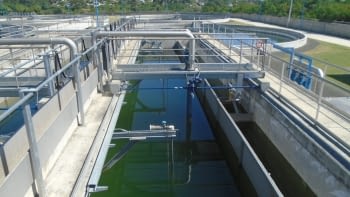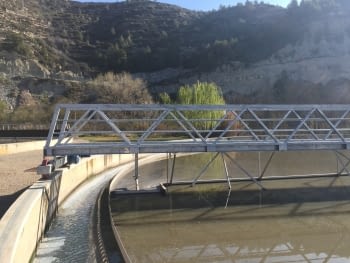Sometimes we are not fully aware, but water is an essential element in our lives (beyond the obviousness that we need to hydrate ourselves to survive). From the kitchen to personal hygiene, through industrial processes and even for recreational activities such as sports. We use water, we consume water, we pollute water.
Wastewater Treatment (the water contaminated by human use) was not taken seriously in Western societies until the 1970s, when society finally identified the effects of urban overpopulation and its exploitation over this vital resource.
Basically, the absence of a system for proper wastewater treatment has a direct impact on people's health. Therefore, cities invested so much in sewage systems and sewage treatment plants that we now take for granted. But what happens exactly when the water disappears through the pipes?
Wastewater Treatment (the water contaminated by human use) was not taken seriously in Western societies until the 1970s, when society finally identified the effects of urban overpopulation and its exploitation over this vital resource.
Basically, the absence of a system for proper wastewater treatment has a direct impact on people's health. Therefore, cities invested so much in sewage systems and sewage treatment plants that we now take for granted. But what happens exactly when the water disappears through the pipes?
Wastewater Treatment Plants
We know as wastewater treatment plants or purification plants those facilities in which wastewater that comes from domestic or industrial sources is purified through a set of operations that are classified into:
- Physical Unit Operations (no chemical reaction involved)
- Chemical Operations or Processes (chemical reactions occur)
- Biological Operations or Processes (involving biological or biochemical reactions)
These operations for Wastewater Treatment have the goal of preserving the health of the resource and the environment that surround us, something that is only possible if the pathogenic bacteria present in the sewage are eliminated, if the organic matter is stabilized, and the contamination of the receiving water bodies is avoided.
The effluent from wastewater treatment plants is reinjected into the subsoil, used as fertilizer or discharged, according to the different determinants established by environmental authorities.
The effluent from wastewater treatment plants is reinjected into the subsoil, used as fertilizer or discharged, according to the different determinants established by environmental authorities.
Stages of Wastewater Treatment
When wastewaters reach a treatment plant, they must go through different stages in order to reach complete purification. In total, they go through four different processes or treatments:
- Preliminary Treatment. Large solids and sands present in sewage are removed. This is where easily separable waste is eliminated, which makes it easier for water to flow properly through the facilities.
- Primary Treatment. Sedimentation and sieving processes are carried out through physical and/or chemical means.
- Secondary Treatment. Biodegradable organic matter is transformed into stable matter by biological action.
- Tertiary Treatment. Last phase consisting of additional treatments for the elimination of nutrients, of excess organic matter or suspended solids and of toxic compounds.
At the beginning of the 21st century, the UN itself already pointed out that one of the most urgent issues of the next decades was to successfully face the ‘growing need for water and sanitary services in the cities’. In a document named ‘Waters and Cities. Facts and Figures’, the UN stated that ‘sustainable, efficient and equitable water management in cities has never been as important as it is in today's world’.
Investing in the development and maintenance of different types of Water Treatment Plants will be a necessary step for all administrations in a path that has to become the destination for them all: to structure a solid Smart Water Management system.
Investing in the development and maintenance of different types of Water Treatment Plants will be a necessary step for all administrations in a path that has to become the destination for them all: to structure a solid Smart Water Management system.




